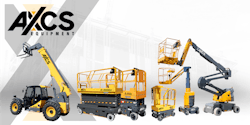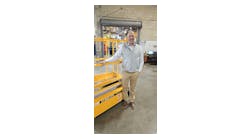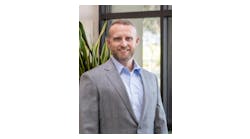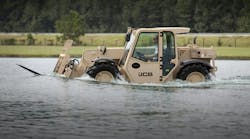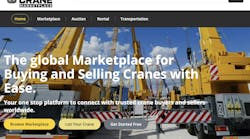Participants:
Shashank Bhatia, vice president of engineering, JLG
Paul Jensen, product manager Americas, Haulotte USA
Ken McDougall, president, Skyjack
Cory Rosencranse, CEO, Xtreme Manufacturing and Snorkel
Justin Kissinger, marketing manager, Hy-Brid Lifts
Simon Meester, president, Terex AWP (Genie)
RER: What new equipment enhancements or developments has your company come up with in the past year?
Bhatia: Understanding the demands and challenges rental customers face on work sites day after day, JLG recently introduced its E18 vertical mast lifts, the SkyTrak 6034 and 6042 telehandlers, as well as the X660SJ compact crawler boom lift to the North American rental market. These new products are equipped with features and capabilities directly inspired by the needs of those who use them.
Here’s a little bit more about how rental customers can benefit from these new products:
The all-new JLG vertical mast lift series includes the E18MCL and E18MML models. The E18MCL is well-suited for construction and industrial applications that require outdoor and indoor capable machines. The E18MML model is ideal for indoor finish work and general maintenance work. The “E” in these models’ nomenclature stands for “Electric” for these machines’ modern DC electric drive system. Both E18 models are equipped with long-running batteries, which offer two times more duty cycles than the market-leading competitive machines.
JLG is in the process of redesigning its popular SkyTrak telehandler line, starting with the all-new 6034 and 6042 models. Featuring a redesigned build, reworked functionality, reimagined technology and refocused serviceability, these 6,000-pound maximum lift capacity telehandlers are ideal for pick-and-place applications, such as handling, loading and unloading bulk materials on demanding residential, commercial, urban and suburban job sites across America.
JLG’s first straight-jib (SJ) compact crawler boom lift, the X660SJ, has 65 feet, 7 inches of platform height, 500 pounds of capacity for up to two workers, and 39 feet of horizontal reach and indoor/outdoor versatility. This model is ideal for a wide range of applications, including arboriculture, painting, general maintenance, electrical, HVAC, and window washing on a variety of job sites such as auditoriums, arenas, atriums, and outdoor structures.
We also just introduced our new ClearSky Smart Fleet IoT (Internet of Things) platform to help rental companies manage their fleets by digitizing daily processes, streamlining logistics, and gaining actionable, on-demand machine insights. This breakthrough IoT technology launches with 25 unique features, including analyzers, telematics and productivity applications into a single connectivity beacon on JLG machines for seamless back-and-forth interaction through a comprehensive mobile app, a user-friendly web portal or an advanced API. Equipment owners and operators can send a prompt to the beacon to identify a machine’s status or perform diagnostics wirelessly through the mobile app.
Jensen: Haulotte introduced the newly updated Compact scissor range to the North American market at the 2023 ARA show in Orlando. The five scissors in the range, with platform heights from 20 to 39 feet, have been completely redesigned from the ground up with rear mounted AC direct drive motors protected by an integrated counterweight, standard folding guardrails, as well as the Haulotte Activ’Screen for industry leading onboard troubleshooting and parameter controls. Also standard is the Haulotte Activ’Energy Management smart charging system that features optimized charging curves, operator charging reminders, a deep-discharge waking cycle to prevent lasting damage, and a de-sulfation cycle to extend battery lifetime.
McDougall: Skyjack recently announced the launch of a new range of DC electric scissors, featuring AC brushless electric drive motors among other significant design changes. Launching globally with availability in all regions throughout 2024, the “simply electric” range will be replacing the current hydraulic drive models.
Providing exceptional duty cycles and fully proportional controls, the innovative drive system offers a superior drive experience. The new range offers improved efficiency, controllability and torque, with up to 20 percent more runtime per charge when compared to previous models. Excellent all-around job site performance is achieved with consistent power, traction, and torque, with over 25 percent gradeability.
Earlier this year Skyjack also updated our award-winning ELEVATE Live telematics system with the launch of ELEVATE Live 2.0. Originally launched in 2018, the mobile-first solution provides operators straightforward access to key machine information such as the machine’s current state of health, pre-use inspection guides, and familiarization materials. Accessed through a simple QR code, ELEVATE Live 2.0 allows straightforward access to features, including live metrics as they pertain to the machines, such as battery details, engine faults, and controller alarms. The updated user interface also includes an additional two screens so that live metrics, documentation, and technical information feeds are available.
Rosencranse: Xtreme and Snorkel design groups have been busy this year working on projects from small, lightweight scissors, with our S3013Mini, S3220Mini, and S3219Plus models, which focus on reliability, low cost of ownership, maneuverability, and capacity, to large, industry-leading products such as our Xtreme XR50100 tracked telehandler. The XR50100 is the most capable telehandler ever built, allowing for a maximum fork height of 100 feet and a max lifting capacity of 50,000 pounds. Along with new, market-leading models, there have been many improvements to existing products, such as electric traction drives and increased platform capacities on various models.
Kissinger: We have launched a pipe rack, confined access platform, and lithium batteries for our lifts to increase operator safety, productivity, and return on investment. The pipe rack helps improve safety and productivity by providing a manufacture tested option to bring up to 100 pounds of pipe up to their working area. It was designed to sit on top of the side guardrail to minimize the amount of working space consumed from the option. We also developed a confined access solution which provides an additional 18.5 inches of access above the top of guardrails to safely access restricted areas. When not in use the confined access collapses down to the guardrail height so the lift can fit through standard doors.
Another option we introduced was lithium batteries to address one of the biggest industry issues of battery maintenance and life. Lithium batteries charge faster, run longer, require no maintenance, and have an estimated lifespan of over 10 years which significantly increases the lifts’ return on investment over the life of the lift.
Meester: Our newest model is the GTH-1256 telehandler, which we launched in January and debuted at ARA in February. Prior to that, late in 2022, we introduced our new electrified S-60 DC and S-60 FE telescopic boom lifts, as well as a Lithium-Ion battery option for slab scissor lifts.
These introductions all have a few things in common and are indicative of Genie’s commitment to quality, and to delivering value to our customers — they were purposefully designed to meet the needs of modern-day jobsites; they were rigorously tested to ensure reliability and durability; and they require less maintenance and offer a lower total cost of ownership.
Obviously, the trend towards electrification of equipment has accelerated in the past year. Are you finding greater interest and acceptance among your rental company customers? How about among end users?
Bhatia: The technology and cost of components involved in the electrification of equipment have advanced in a positive direction in recent years, leading to greater interest and acceptance within the entire ecosystem — from the end users and rental companies through to manufacturers and suppliers.
For end users, demand for electrified machines is accelerating due to two major benefits of this type of equipment: Zero emissions and low noise operation.
As end users are more frequently requesting electric models for projects, this has grown the demand within the market for more electrified products in rental fleets.
For rental company customers, in addition to meeting the customers’ preferences for electric machines, the benefits of having electrified equipment in their fleets are simplified machine servicing due to fewer components to maintain and the socio-economic responsibility of attaining ESG (environmental, social and corporate governance) targets.
Jensen: We are finding that some of our customers have worked hard to create and build new markets where electric machines have big advantages. We see reports that some government jobs have preferences for electric machines and are willing to pay a premium for the feature. We are beginning to see an increase in green construction projects that are striving to minimize their environmental impact. Also, the Haulotte HS 5390 E rough terrain electric scissor has become a popular indoor machine. Its 1,650-pound platform capacity and double extension platforms provides a large work surface for jobs that have previously been done from smaller boom lift baskets.
End users are enjoying the flexibility our electric machines bring to a jobsite. Using the same machine for indoor and outdoor work increases their productivity. Also, electric machines are nearly silent and transmit less vibration to operators compared to internal combustion engines. Both factors reduce stress on workers while improving job site conditions.
McDougall: Interest is certainly rising and the trend towards sustainability is undeniable. We have found interest is particularly high in Europe, although engagement in North America is also starting to increase as of late.
The drivers originate at a government level through policies in reaction to environmental and sustainability concerns. As governments are often the major sponsor of construction projects, they can use this leverage as sponsors to enforce these policies that contractors are obliged to conform to. Thus, rental companies with contractors as their main customer group are similarly obliged to offer machines that meet these sustainability demands.
Rosencranse: We are seeing increased interest in electrification primarily from larger rental customers, and some end users. The end users seem to be more tailored to specialty operations, such as mining, underground, food processing, and clean-room work.
Kissinger: In the slab scissor lift segment, electrification of has been happening for a long time and is commonplace. When Hy-Brid Lifts was launched in 2004, we used electric drive and steering for our scissor lifts when other manufactures were focused on hydraulic systems. This reduced the amount of hydraulic oil needed and provided greater efficiency. A few years ago, we showed an all-electric scissor lift at The ARA Show to completely remove hydraulics. While there was customer interest, the pricing was a sticking point but with all new technology the price will eventually come down to an acceptable level to drive customer adoption.
Meester: By now, many equipment owners and operators have had experience with the newer generations of electrified equipment; which, when I say “electrified,” I’m talking about both hybrid and electric machines. When implemented correctly, both hybrid and electric machines perform as well as, or in many cases better than, their diesel counterparts. They also use energy more efficiently and require less maintenance.
Here in North America, our FE hybrid booms have been available and on jobsites for more than six years now, and we think that will continue to be the best solution for our customers for the near future. They not only offer the rugged performance needed for demanding outdoor jobsites, they use less fuel — a single tank can last a full, standard work week in hybrid mode — and have reduced emissions. In electric mode, FE hybrid booms offer all the benefits of an electric boom and can work a full, standard workday on a single charge.
Continuing on the topic of electrification and battery-powered equipment, there is still a perception among many that they don’t perform as well as diesel-powered machines. Any thoughts on that?
Bhatia: With the advances in battery technology over the years, today’s battery-powered electric equipment has the torque and power needed to meet the same functional requirements, like drive speed and lift speed at similar platform capacities, that diesel-powered machines today do.
That said, this lingering perception in the industry is likely being driven by the runtime of the machines and the state of the charging infrastructure. Electric equipment requires both a) access to electricity for charging due to its limited runtime and b) sufficient charging time between work shifts to reach a full state of charge.
Jensen: Haulotte does extensive performance comparison testing between electric and internal combustion machines while developing our electric solutions. We make sure that operators won’t notice a difference in drive speed, elevation speed, or obstacle climbing capability. But we do make sure that you notice a difference in other areas. Electric machines require less maintenance and have fewer mechanical failure points. Haulotte’s SHERPAL telematics system gives owners instant access to machine health status, critical alerts, and recommended preventative maintenance to increase machine up time.
Pairing SHERPAL with Haulotte’s Activ’Energy Management smart charging system increases your battery lifespan with an automatic watering system and instant alerts when a machine needs to be charged to prevent battery abuse. Haulotte electric machines not only perform as well as internal combustion machines, they outperform them in uptime and total cost of ownership as well.
McDougall: In many senses, the rental industry is faced with some of the same questions that face the electric car buyer – charging opportunities, range anxiety, etc. Speak to any electric car owner and they will tell you have to change the way you drive. So, the question is, “how does the rental industry best change the way it does things to take full advantage of the technology?” The industry may have to change some of the ways they work with their fleet, and some expectations may have to change along with that. However, there are operational benefits to be explored and here rental companies are the experts. At a glance, you will see savings on resources that are escalating in cost. There will be savings on lifetime costs such as engine maintenance.
Rosencranse: As with any technology that is being introduced, there is always resistance. Battery-powered equipment still carries a perception of decreased performance. In some situations, a battery-powered machine will do the same work faster, cleaner, and more efficiently than an internal combustion powered machine. But, in other areas where machines must be driven long distances with heavy loads, work with ground-engaging tasks, or require heavy drawbar and tractive work, battery machines are still at a noticeable disadvantage. As battery and charging technologies, and infrastructure improve, hopefully these issues will have less impact on the perception.
Has the charging infrastructure improved for electric equipment on job sites?
Bhatia: As battery technology has advanced, so has the charging infrastructure and it continues to improve as manufacturers leverage developments in other industries, like automotive, to bring solutions to the rental industry. This crossover will be more evident in higher-voltage equipment (> 350V) where the charging infrastructure and fast-charging capabilities solve the longer charging time concerns.
For lower-voltage equipment, like in some of the MEWPs (mobile elevating work platforms like boom lifts, scissor lifts, etc.), the requirements for charging the equipment will be around leveraging the existing single-phase/3-phase power at 110V architecture (because it’s the most developed), along with other solutions like improving the battery management systems and developing portable energy power solutions (e-generators) that can be brought to the equipment to charge it.
Other than this, further enhancements in lithium-ion battery technology and other battery chemistries will give the opportunity to integrate longer-lasting, quick-charging batteries into rental equipment, which will help to balance the limitations of the charging infrastructure.
Jensen: Electrical infrastructure on job sites has always been a challenge. There never seems to be enough outlets and it’s not uncommon for extension cords to be unplugged for a quick job and then that cord is forgotten, leaving machines uncharged overnight and not ready for work in the morning. With more electric machines and tools entering job sites, the challenge is increasing.
Haulotte is approaching the charging infrastructure challenge by minimizing the need to rely on it. The Pulseo family of electric machines features a detachable range extender that charges machine batteries independent of the grid. Machines equipped with the range extender can choose from three modes of battery-powered electric operation.
Battery-only mode is the lowest emissions way to work. Perfect for quiet zones and work indoors. Range Extender mode turns on the range extender to charge the battery pack, even while operators continue to work, increasing productivity and reducing downtime. Automatic mode senses a low battery pack and automatically turns on the range extender to charge the machine. Once the battery pack is charged, the range extender shuts down automatically, conserving fuel, lowering emissions, and keeping the machine ready for a full shift of work. Increasing its value even more, the range extender can be quickly removed from one machine and used on any other compatible machine to minimize operating costs and increase flexibility.
McDougall: I am reminded of a social media post of guys excitedly around an all-electric mini excavator that has completed its duty cycle with no emissions. Great! Except that the charge cable is shown winding across site to a diesel generator that is more than making up for the machines’ lack of emissions.
While improving, progress has arguably been slow. That is part of the reason for the two approaches with Battery Electric (BEV) and Hybrid Electric Vehicles (HEV). The way this type of mix will play out is largely dependent on site infrastructure and improvements in battery technology that may allow longer (daily or weekly) operational capacity.
Rosencranse: With the demand for our electric machines, we must expect that this infrastructure is improving all the time. Speaking with various customers, it seems as if we still get answers that are still across the board here. Some areas of the world have rapidly improved infrastructure to manage this new generation of equipment, while others are slower to adopt.
Kissinger: By the time our lifts come on the jobsite there usually is adequate power to the site.
Meester: As more and more equipment owners and operators have exposure to today’s electrified machines, they’re finding that they can perform as well or better than diesel machines.
In fact, one feature that operators in particular appreciate about our FE hybrid machines is that, in hybrid mode, the machine actually charges the battery. So, even if the battery is depleted, the machine can still start and run. Which means there isn’t any downtime on the jobsite if the battery is dead.
It appears that the coming year should be strong for aerial equipment sales. Do you expect to see a lot of opportunities in infrastructure spending? Increased industrial and/or non-residential work? An onshoring trend in North America?
Bhatia: Across the board, the industry continues to be very healthy, and specific to the rental market, there is a significant demand globally for access equipment right now, largely due to the recent uptick in infrastructure spending around the world and ongoing fleet replacement activities.
In the U.S. specifically, the onshoring trend is driving the momentum for mega-construction projects ($5+ billion investments each). Thanks to the three different infrastructure bills passed by Congress, significant capital expenditures are being made right now to build plants to produce batteries, semiconductor chips and LNG, as well as to construct new refineries and industrial facilities.
Jensen: Next year should be the right time to see the infrastructure spending affect our sector of the industry. Architects and designers are finishing their work and a lot of the ground and foundation work is underway. We’ll see the need for MEWPs on job sites soon as those projects continue to progress. In addition to infrastructure, we have seen an increase in mega projects as warehousing and manufacturing continue to grow both in number as well as in size of the projects. In addition to new construction, there is a large number of existing buildings that are being repurposed and MEWPs will play a big role in those renovations.
McDougall: Like in many industries, COVID and other geopolitical events have created unprecedented supply chain issues and increased costs. Global fleet aging has increased during the COVID years and the rental industry is keen to improve that situation. In North America, the recent tariff changes exacerbated supply chain issues and decreased rental company choice in a time of high demand. They also increased North American prices. While the market grew in 2022 there were some supply constraints that held back that fleet age improvement objective. In 2023 and 2024 we expect those constraints to lessen and for the fleet age renewal progress to grow the market.
Rosencranse: We are also expecting the coming year to be strong in equipment sales. There seem to be opportunities in each market in which we are involved. The key will be to fill that demand with product with a supply chain that is still stressed. Onshoring is definitely an important strategy, as the world realized just how crippling a pandemic can be.
Kissinger: Next year demand for aerial equipment will continue to be strong as the COVID-19 pandemic significantly disrupted the industry. At the start of the pandemic, companies delayed purchases which increased their fleet ages. Then when the industry
started opening up again, demand skyrocketed, and manufacturers encountered supply chain issues that delayed deliveries, keeping the fleets aged. Additionally, the infrastructure spending and onshoring will continue to increase equipment demands in all segments.
Meester: We are optimistic about the market outlook in North America. Utilization rates remain strong, and customers are optimistic. Infrastructure spending is one area that we believe will continue to propel demand. Additionally, demand is strong in other industries as well. On top of this, our customers are in the replacement cycle and we’re still seeing pent up demand as a result of the supply chain challenges that started in 2021.
Are the supply chain issues still a major problem for your company and are lead times still long or are things more normal?
Bhatia: We continue to see positive momentum with the ongoing supply chain constraints. Lead times are improving as materials and components become more readily available.
To balance the challenges JLG has experienced due to shortages, we have worked diligently internally to maintain supply and satisfy the market demand, while also creating many new efficiencies across our operations to minimize the impact on our customers.
Jensen: We are seeing a little bit of both sides of this equation as we transition away from the major supply chain problems. We have a healthy backlog as we continue to grow our business, and this has helped us time our purchasing and [ability to] plan ahead with our suppliers. We are also lucky enough to have some equipment on hand for quick responses to customers that need to take advantage of their own new opportunities. We are still working through occasional supply challenges, we aren’t out of the woods yet, but we have seen significant recent improvements.
McDougall: Apart from occasional surprises, it has been relatively quiet as of late in terms of supply chain issues. However, part of that solution is changes that we are making in our operational approach to support an “in market for the market” strategy. Taking the number of manufacturing plants worldwide from two in Canada to five globally with additional plants in Hungary, Mexico and China, will bring our potential global unit capacity up 235 percent when compared to 2022.
Rosencranse: Depending on the type of components, we have not seen lead-times improve to pre-pandemic levels, but our supply chain is starting to recover, and we are seeing things trend in positive directions.
Kissinger: Supply chain issues have significantly improved for us. Suppliers are still cautious and not all of them have returned to full capacity, which has increased lead times for some components but all of that can easily be managed by operations to keep production on schedule. The supply chain improvements have allowed the lead times for our range of equipment to return close to normal.
Meester: We started to see improvements in the supply chain earlier this year, with some regions and some component categories improving faster than others. Those improvements have continued, and although we still have a strong backlog, we’re seeing some improvements in terms of lead times and we’re optimistic that things are trending in the right direction.
Any there other trends in aerial equipment you expect to see in the near future?
Bhatia: As demand continues to grow for electrified equipment on job sites, one of the biggest trends we’ll see soon is more electric MEWP and telehandler models introduced in the market. This will also drive the development of charging infrastructure solutions, like portable charging solutions for lower-voltage equipment. We also anticipate that sustainable, eco-friendly options will become more readily available.
Another trend we expect is telehandler lines continuing to expand in the sub-compact size class as there continues to be more need in the market for models under 5,000 pounds.
Connectivity, software as a service (SaaS), and digital products are also growing at a rapid pace. Historically, the construction industry has lagged behind other industries in adopting these technologies, but it is starting to catch up, and particularly in the aerial market, we see evidence that adoption is accelerating significantly faster and will continue to do so.
McDougall: Over the last few years, AWPs have changed substantially. Even veteran operators have something to learn, particularly as advancements such as electrification and telematics become more commonplace. As a direct result of this, training will continue to be important. We saw that many of the questions and issues our service and support teams are fielding could have been prevented with training and/or familiarity with the manual. Our recent campaign with Manny the Manual and the development of our QuickStart guides are examples of this.
Furthermore, we see an increased use of mobile devices and telematics deliver operational improvements for both rental companies and customers. In the same vein is our ELEVATE Live offering, which is now in its second generation.
Rosencranse: We believe we are going to continue to see a big push in Li-Ion batteries and technology, decreased charging durations, a large focus on sustainability and carbon footprint of the product.
Kissinger: Aerial equipment will continue to be electrified, not just drive systems but full electrification removing all hydraulics from the equipment as the technology matures to allow the cost to be justified. With electrification there will be more lithium batteries to reduce maintenance costs and more connectivity with telematics to increase productivity and service.
